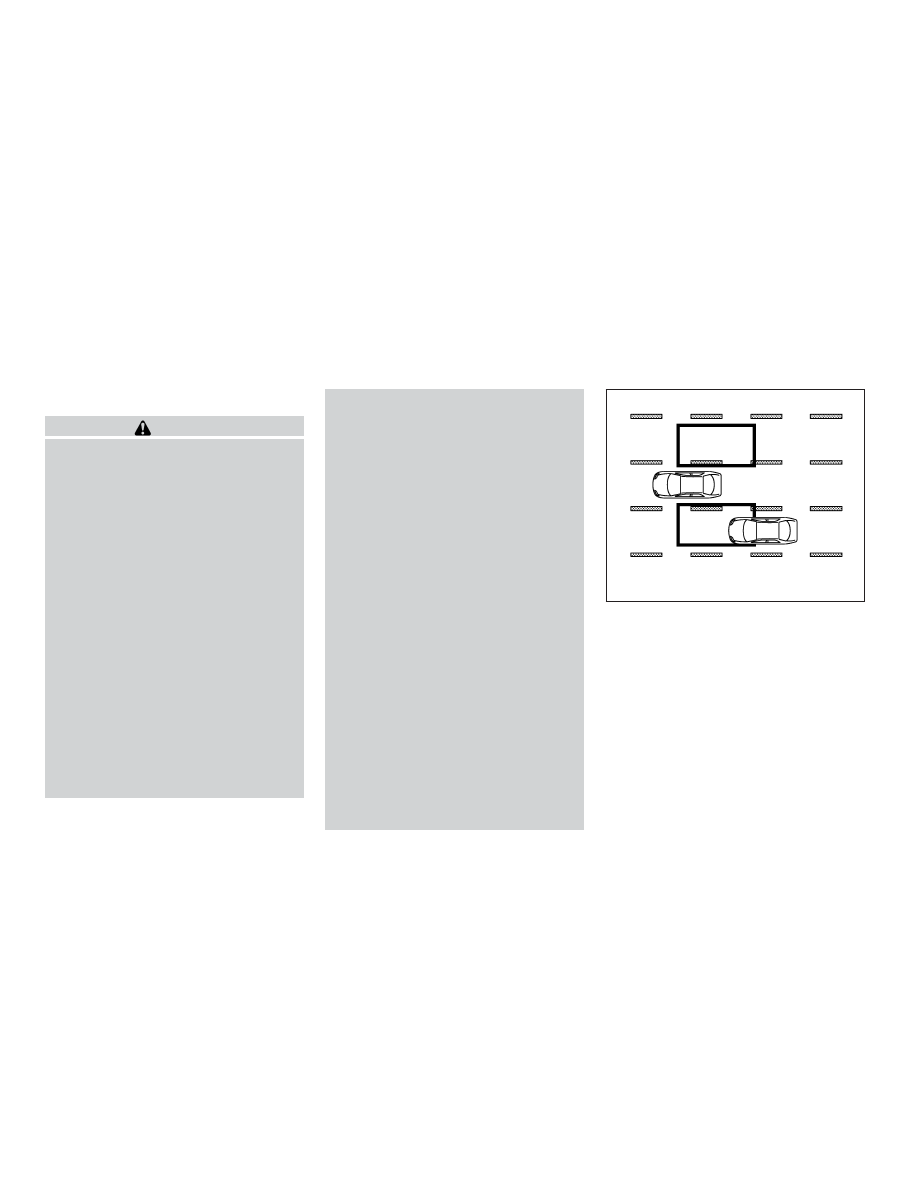Nissan Pathfinder Hybrid (2015 year). Instruction - part 25

BSW SYSTEM PRECAUTIONS
WARNING
● The radar sensors may not be able to
detect and activate BSW when certain
objects are present such as:
– Pedestrians, bicycles, or animals.
– Vehicles such as motorcycles, low
height vehicles, or high ground clear-
ance vehicles.
– Oncoming vehicles.
– Vehicles remaining in the detection
zone when you accelerate from a
stop. For additional information, re-
fer to “BSW driving situations” in this
section.
– A vehicle merging into an adjacent
lane at a speed approximately the
same as your vehicle. For additional
information, refer to “BSW driving
situations” in this section.
– A vehicle approaching rapidly from
behind. For additional information,
refer to “BSW driving situations” in
this section.
– A vehicle which your vehicle over-
takes rapidly. For additional informa-
tion, refer to “BSW driving situa-
tions” in this section.
– A vehicle that passes through the de-
tection zone quickly.
● The radar sensors detection zone is de-
signed based on a standard lane width.
When driving in a wider lane, the radar
sensors may not detect vehicles in an
adjacent lane. When driving in a narrow
lane, the radar sensors may detect ve-
hicles driving two lanes away.
● The radar sensors are designed to ig-
nore most stationary objects, however
objects such as guardrails, walls, foli-
age and parked vehicles may occasion-
ally be detected. The system malfunc-
tion warning message with the Blind
Spot indicator (orange) will appear in
the vehicle information display. This is a
normal driving condition.
● Severe weather or road spray condi-
tions may reduce the ability of the radar
to detect other vehicles.
● Excessive noise (e.g. audio system vol-
ume, open vehicle window) will inter-
fere with the chime sound, and it may
not be heard.
BSW DRIVING SITUATIONS
Another vehicle approaching from
behind
Illustration 1: The Blind Spot Warning indicator
light illuminates if a vehicle enters the detection
zone from behind in an adjacent lane.
However, if the overtaking vehicle is traveling much
faster than your vehicle, the indicator light may not
illuminate before the detected vehicle is beside
your vehicle. Always use the side and rear mirrors
and turn and look in the direction your vehicle will
move to ensure it is safe to change lanes.
Illustration 1 – Approaching from behind
SSD1026
5-22
Starting and driving